The team of Shenzhen Lingpao Technology Co., Ltd. was established in 2021, focusing on data communication industry, Internet of Things, security monitoring and other intelligent hardware, providing high-quality products and solutions. The company’s headquarters is located in Nanshan High-tech Industrial Park , Shenzhen, has a complete independent research and development, manufacturing, and sales system.
Maintenir des échanges techniques étroits et une coopération avec Qualcomm, Realtek, MTK, Intel et d'autres fabricants de puces réputés dans l'industrie, et améliorer continuellement le niveau technique et les capacités de service.
The factory covers an area of 5000+square meters, has 10 SMT high-speed lines, and has ISO9001 quality certification system. The product is exported to more than 10 countries and regions.
FAQ Guide
Let’s continue!
1.What is a PoE switch do?
2.What is the disadvantage of PoE switch?
3.What is the difference between PoE and powered switches?
4.Does a PoE switch need a power supply?
5.When should I use a PoE switch?
6.What happens if you plug a non-PoE device into a PoE switch?
7.What happens if you plug a computer into a PoE port?
8.Can I connect a normal router to a PoE switch?
9.What is the difference between PoE and PoE+?
10.Can PoE be turned off?
11.Does PoE slow down Internet?
12.How far can PoE go over Ethernet?
13.What are the key features of a POE switch?
14.How does a POE switch differ from a regular switch?
15.What are the power options for a POE switch?
16.What is the maximum power budget for a POE switch?
17.How many devices can be powered by a POE switch?
18.What is the maximum data transfer rate for a POE switch?
1.What is a PoE switch do?
Power over Ethernet (PoE) is an access layer technology that combines data signals and electrical power into a single Ethernet cable connection to enable remote powered device. PoE switch provide PoE power and network connectivity over twisted-pair wire to access points, surveillance cameras, and other IoT devices.
2.What is the disadvantage of PoE switch?
As the name suggests, a non-PoE switch does not support Power over Ethernet. This means that it cannot provide power to devices connected to it, such as IP cameras or VoIP phones. On the other hand, a PoE switch can supply power to these devices through Ethernet cables.
3.What is the difference between PoE and powered switches?
As the name suggests, a non-PoE switch does not support Power over Ethernet. This means that it cannot provide power to devices connected to it, such as IP cameras or VoIP phones. On the other hand, a PoE switch can supply power to these devices through Ethernet cables.
4.Does a PoE switch need a power supply?
Yes, a PoE (Power over Ethernet) switch requires power to function. It is designed to provide power to connected devices, such as IP phones, wireless access points, and security cameras, through the Ethernet cables. The switch itself needs to be connected to a power source to supply power to these devices.
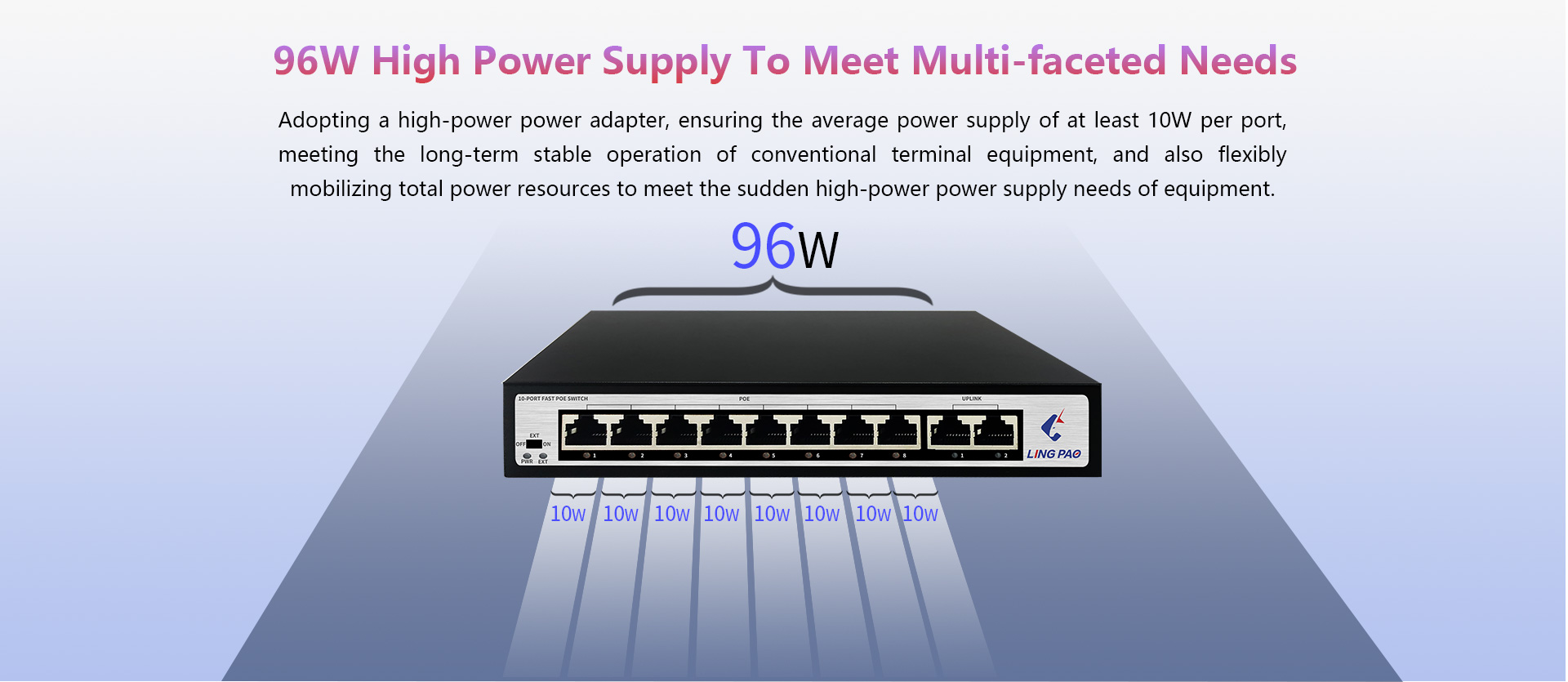
5.When should I use a PoE switch?
These PoE media converters may be the more economical and space-saving solution. However, when you have too many power devices on your LAN, using a PoE switch becomes one of your priorities.
6.What happens if you plug a non-PoE device into a PoE switch?
The PoE switch can automatically identify the terminal device that needs power, whether it is a PoE device or a non-PoE device. Therefore, PoE does not interfere with normal switch operation. PoE and non-PoE devices can be mixed on the same switch at the same time. There is no problem at all.
7.What happens if you plug a computer into a PoE port?
Well, note that your PC can still work if you plug it into a PoE port. That’s because the PoE switch can detect the devices that accept PoE and that don’t accept. In such cases, the PoE switch will only use the data communications features and not transmit power.
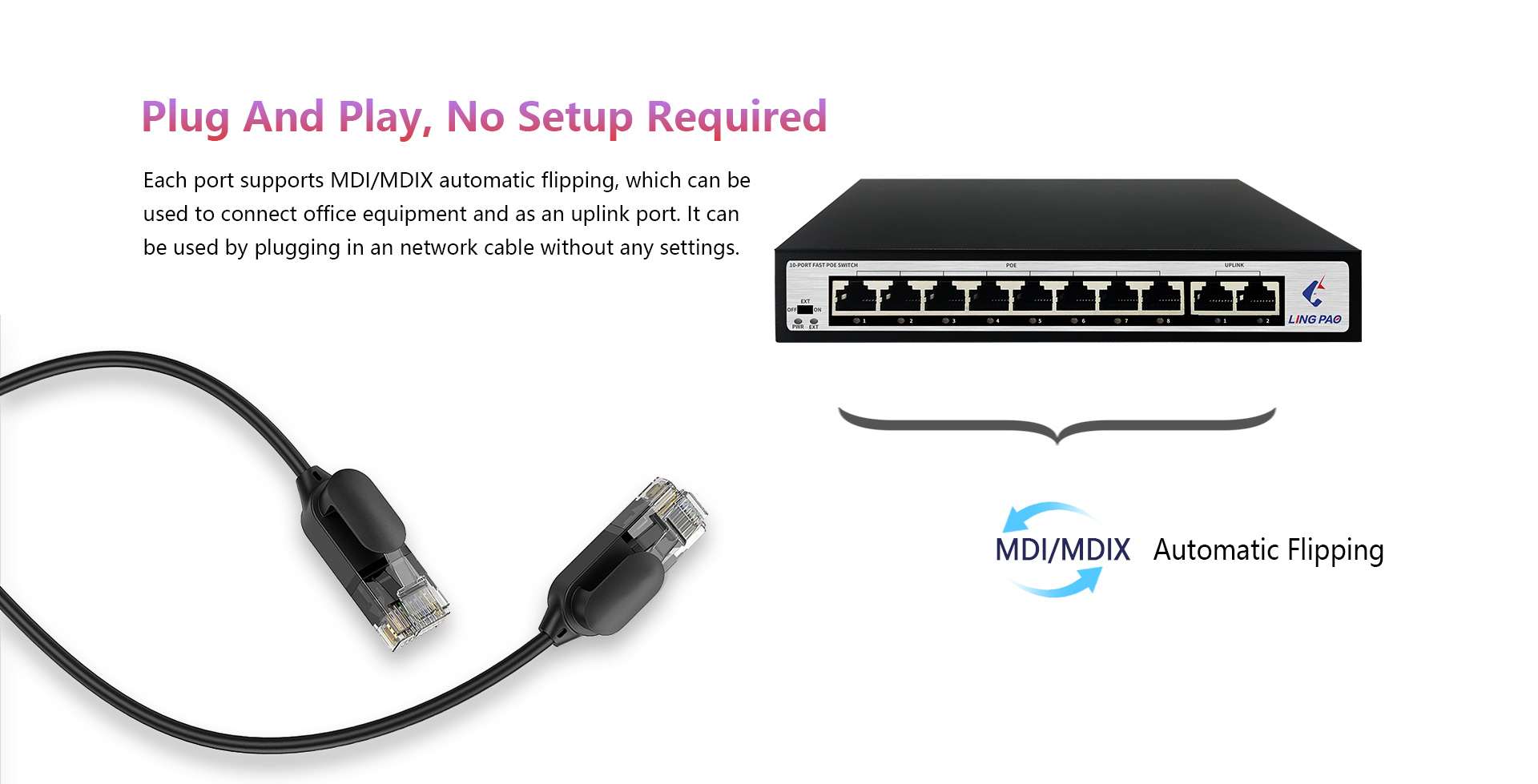
8.Can I connect a normal router to a PoE switch?
So, you can plug a non-PoE device into a PoE switch, It will only transmit data, don’t worry it will burn up your devices. 3. However, not all PoE switches are standard PoE switches. You have to verify the type of PoE, to figure out whether it’s active or passive.
9.What is the difference between PoE and PoE+?
PoE (802.3af):This is the original PoE standard and provides up to 15.4 watts of power per port. PoE+ (802.3at):This standard provides up to 30 watts of power per port. PoE++ (802.3bt):This is the latest and most powerful PoE standard and provides up to 100 watts of power per port.
10.Can PoE be turned off?
The PoE settings display. Click the Enable PoE button to enable or disable PoE for the selected ports. By default, PoE is enabled for all PoE-capable ports. If the button displays green, PoE is enabled for the selected ports.
11.Does PoE slow down Internet?
Therefore, everyone is concerned that whether PoE switches will affect speed. The answer is no. The speed of your Internet will not be slowed down by an Ethernet connection, despite the fact that it is not wireless like a wifi connection.
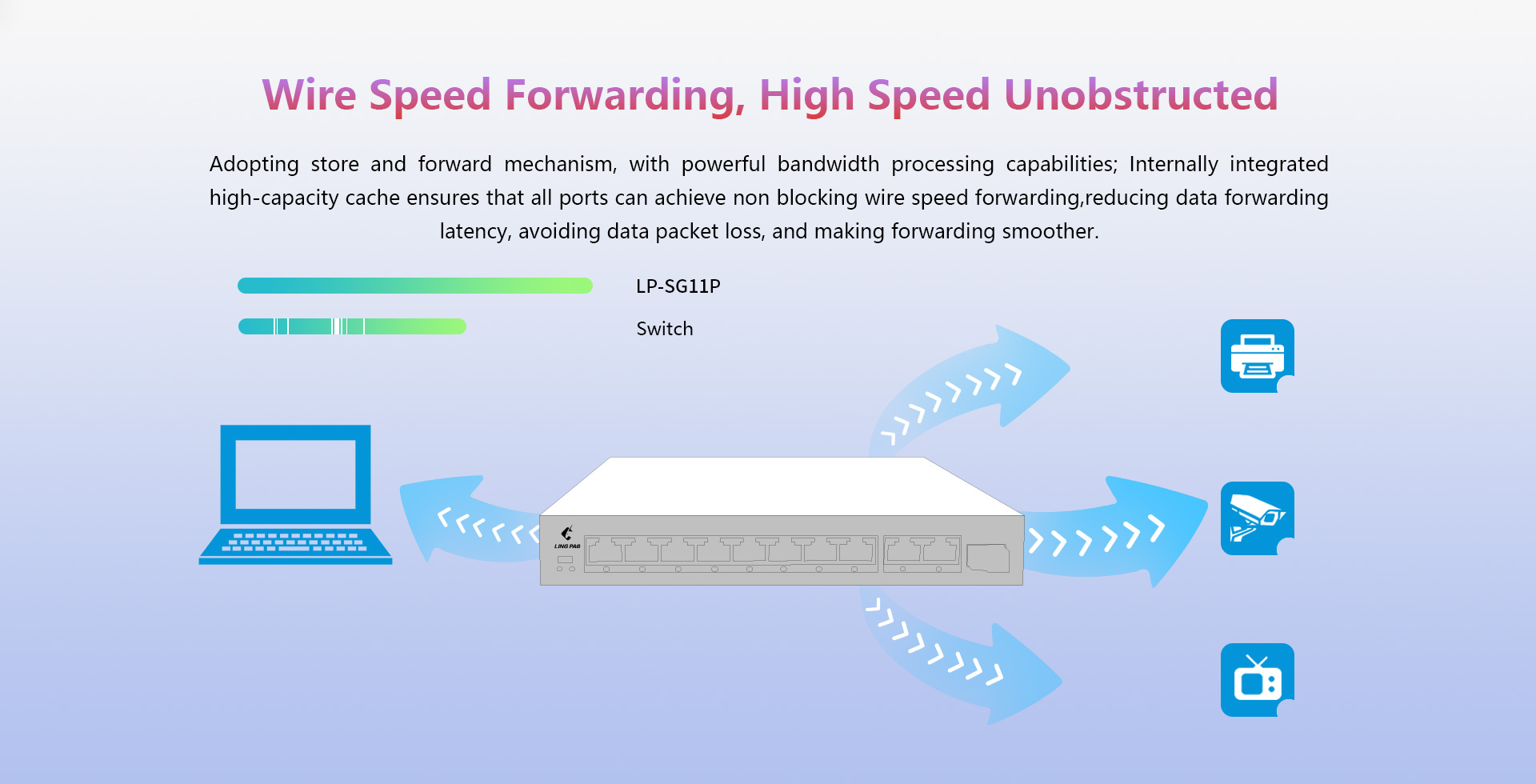
12.How far can PoE go over Ethernet?
Power over Ethernet (PoE) is a useful technology in powering remote devices, but as we see with any copper network cable, the challenge lies in the limited distances of UTP cabling. The maximum distance for Power over Ethernet (or any network data transmission) is 100 meters or 328 feet.
13.What are the key features of a POE switch?
Power over Ethernet (PoE):
One of the main features of a POE switch is its ability to provide power to connected devices through Ethernet cables. This eliminates the need for separate power sources for devices such as IP cameras, wireless access points, and VoIP phones.
Multiple Ethernet ports:
POE switches typically come with multiple Ethernet ports, allowing for the connection of multiple devices. This makes it a cost-effective solution for networks that require a large number of connections.
Gigabit Ethernet support:
Most POE switches support Gigabit Ethernet, which provides high-speed data transfer rates. This is especially useful for bandwidth-intensive applications such as video streaming and large file transfers.
VLAN support:
Virtual Local Area Network (VLAN) support allows for the creation of separate logical networks within a single physical network. This feature provides better network management and security, as well as improved performance.
Quality of Service (QoS):
POE switches often come with QoS capabilities, allowing for the prioritization of certain types of network traffic. This ensures important data, such as VoIP calls, receive the necessary bandwidth and are not affected by other network traffic.
Management capabilities:
POE switches can be managed through a web-based interface or a command line interface, allowing for remote configuration, monitoring, and troubleshooting. This is particularly useful for larger networks with multiple switches.
Redundancy:
POE switches may also come with redundancy features such as dual power supplies or multiple uplink connections, ensuring reliable network connectivity in case of a failure.
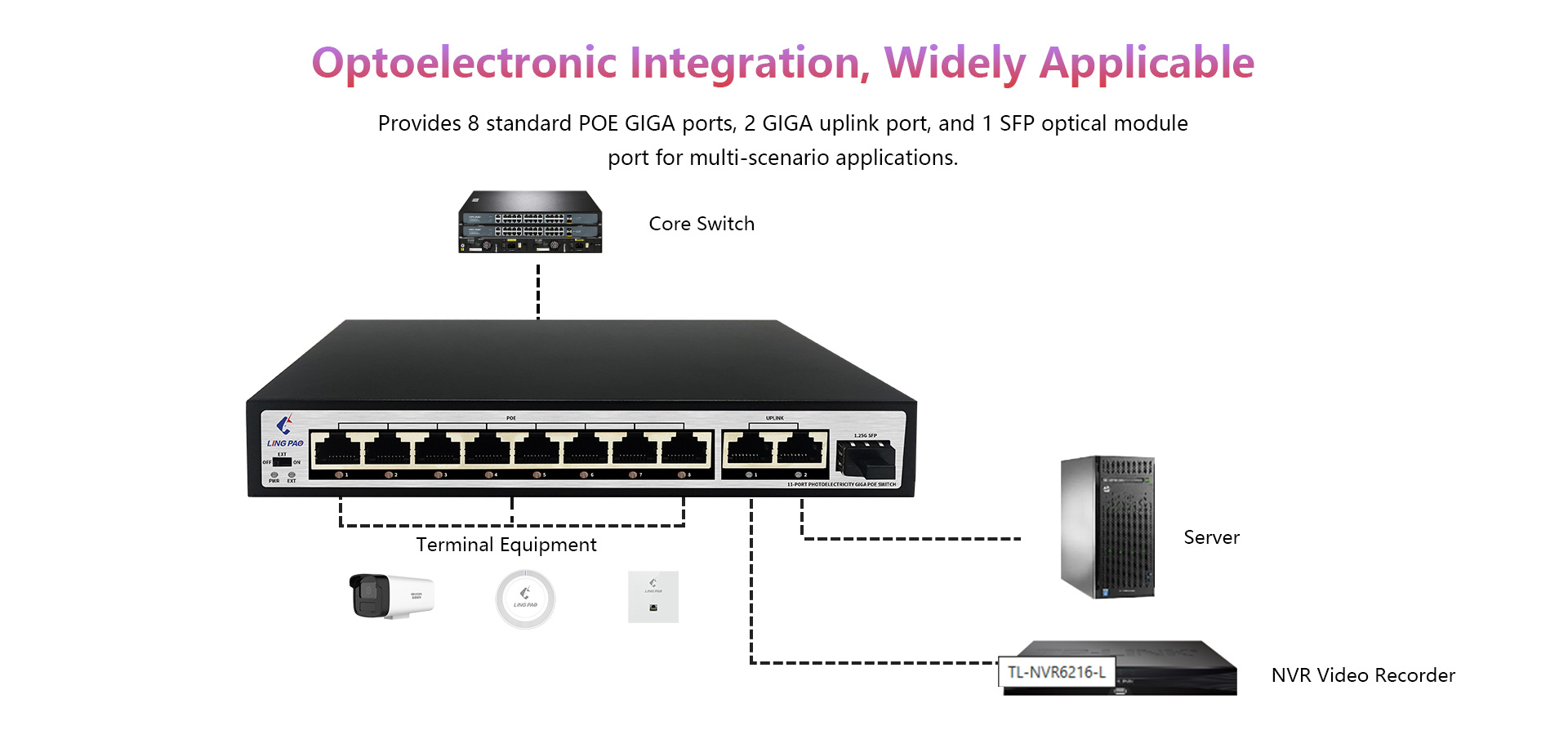
14.How does a POE switch differ from a regular switch?
A POE (Power over Ethernet) switch is a type of network switch that is capable of providing power to devices over Ethernet cables. This means that devices such as IP phones, wireless access points, and IP cameras can receive both data and power from a single Ethernet cable, eliminating the need for separate power cables.
On the other hand, a regular switch does not have the capability of providing power over Ethernet cables. It can only transmit data between devices connected to the network.
Here are some of the key differences between a POE switch and a regular switch:
Power Delivery: POE switches are designed specifically to deliver power over Ethernet cables, whereas regular switches do not have this capability. They require separate power sources, such as outlets or power adapters, to function.
Network Flexibility: With a POE switch, devices can be placed in remote or hard-to-reach locations without the need for a nearby power outlet. This makes the network more flexible and allows for easier installation of devices. Regular switches, on the other hand, may require additional infrastructure and power sources for remote devices.
Cost: A POE switch may have a slightly higher upfront cost compared to a regular switch, but in the long run, it can save money by eliminating the need for additional power outlets and cables.
Power Management: POE switches have built-in power management features that allow network administrators to monitor and control power consumption for connected devices. Regular switches do not have this capability.
Device Compatibility: Not all devices are compatible with POE, so a POE switch may not be necessary if your network devices do not require power over Ethernet. In this case, a regular switch will suffice.
In summary, a POE switch differs from a regular switch in its ability to provide power over Ethernet cables, making the network more flexible, cost-effective, and easier to manage.
15.What are the power options for a POE switch?
Power over Ethernet (PoE) switches are devices that provide power and data connectivity to network devices using a single Ethernet cable. There are several power options available for PoE switches, including:
IEEE 802.3af: This standard, also known as PoE, can deliver up to 15.4 watts of power to connected devices. It is suitable for devices that require low power, such as IP phones, IP cameras, and wireless access points.
IEEE 802.3at: Also known as PoE+, this standard can provide up to 30 watts of power to connected devices. It is suitable for devices that require higher power, such as PAN, PTZ cameras, and high-power access points.
IEEE 802.3bt: This standard, also known as PoE++, can deliver up to 60 to 100 watts of power to connected devices. It is suitable for devices that require even higher power, such as thin clients, laptops, and video conferencing systems.
Passive PoE: In this method, power and data are sent over the Ethernet cable without any negotiation between the switch and the connected device. It is suitable for devices that do not support any of the IEEE standards.
Power over HDBaseT (PoH): This is a proprietary method that can deliver up to 100 watts of power over longer distances, up to 100 meters. It is commonly used for high-power devices such as projectors, digital displays, and audio systems.
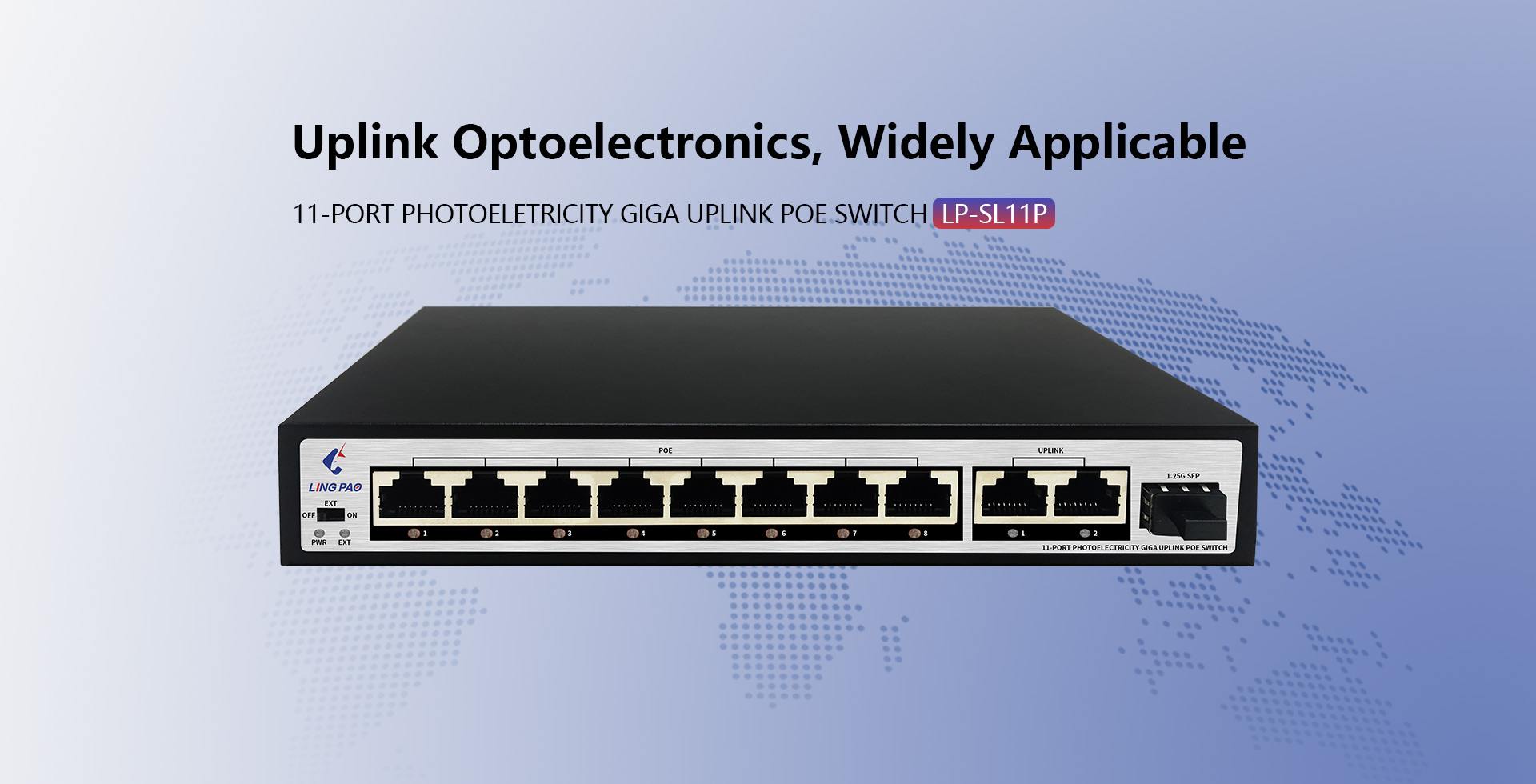
16.What is the maximum power budget for a POE switch?
The maximum power budget for a POE switch can vary depending on the specific model and manufacturer. However, in general, most POE switches have a maximum power budget ranging from 15 watts to 60 watts per port. This means that the overall power budget for a 24-port POE switch could range from 360 watts to 1440 watts. Some high-powered POE switches may have a maximum power budget of up to 90 watts per port, allowing for a maximum power budget of 2160 watts for a 24-port switch. Ultimately, the maximum power budget for a POE switch will depend on the specific model and its capabilities.
17.How many devices can be powered by a POE switch?
The number of devices that can be powered by a POE switch will depend on the specific model and capacity of the switch. Generally, POE switches are designed to support multiple devices, ranging from 4 ports to 48 ports or more. Some higher-end switches can power up to 60 devices or more.
Factors such as the power budget, power consumption of the devices, and cable length can also affect the number of devices that can be powered by a POE switch. For example, if a POE switch has a power budget of 240 watts and each device requires 15 watts of power, the switch can power up to 16 devices. However, if the same switch is used to power devices that require more power, such as PTZ cameras or wireless access points, the number of supported devices will be lower.
It is important to check the specifications of the POE switch and the power requirements of the devices to determine the maximum number of devices that can be powered. Additionally, using a POE injector or midspan can also expand the number of devices that can be powered by a POE switch. Overall, the number of devices that can be powered by a POE switch will vary depending on the specific setup and requirements of the network.
18.What is the maximum data transfer rate for a POE switch?
The maximum data transfer rate for a POE (Power over Ethernet) switch can vary depending on the specific model and specifications of the switch. However, in general, the maximum data transfer rate for a POE switch is typically around 1 Gbps (Gigabit per second). Some high-end POE switches may have a maximum data transfer rate of 10 Gbps
